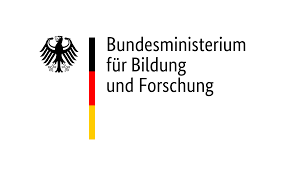Injection molding of cellulose fibers - Development of the manufacturing process for paper applications for technical components that fall into tools
The overall aim of the research project is to enable the production of paper components using the injection molding process.
Project background
The background and motivation for this project is the increasing awareness of the sustainable use of our resources due to climate change and decreasing availability. Plastics are increasingly being criticized due to the significant impact on the environment and people, which is particularly evident in the pollution of the oceans. Consumers are therefore increasingly demanding products made from sustainable or plastic-free materials.
One way to meet the growing demand for alternative materials is to use renewable and recyclable materials. Cellulose, as the most abundant organic substance in nature, is one way of accomplishing this task. However, current processes for shaping paper into three-dimensional components have so far only been able to achieve low strength and design freedom, which limits the areas of application for paper-based components. This research project therefore aims to enable the production of paper components using the injection molding process.
This process was chosen because it stands out from other processes due to the high level of detail freedom of the components, high degree of automation, good functional integration and many possible combinations. Due to the properties of this process, it is expected that the complexity and strength of the components can be increased.
The ability to produce complex, dimensionally stable paper components with sufficient strength offers the opportunity to expand or open up new areas of application for paper that were previously covered by non-sustainable materials. This provides an alternative to promote the use of renewable raw materials for the production of technical components and to reduce the use of fossil finite raw materials.
The natural material paper achieves a recycling rate of 80% due to its good infrastructure. Expanding the range of applications for paper therefore has major benefits in terms of environmental and climate protection, the circular economy and resource efficiency. Only biologically sustainable materials are to be used in this project, thus promoting the sustainable use of our resources.
Project objective
The main objective of the project is to develop a process for the production of complex three-dimensional paper components by injection molding and to determine the substitutability of paper for technical plastic components. The aim is to develop and investigate ways of influencing the rheological properties of the paper suspension. Furthermore, a processing technology will be developed to enable the reliable and efficient production of paper components in the injection molding process.
Project procedure
To achieve the goal, a systematic development of a paper suspension is carried out, which is adapted to the properties of the injection molding process. To this end, solutions for influencing the rheological properties of the suspension as well as measurement methods on a laboratory scale to determine the processing properties are developed. This is followed by development work on the individual processes: Preparation, pre-dewatering, dosing, spraying, shaping, dehumidification. Once the individual processes and components have been validated, they will be combined into a pilot plant.
The optimum process parameters and optimization potential of the plant will be determined. As soon as this work item has been completed, a parameter study will be carried out to produce paper components and determine the mechanical properties and potential areas of application.
Systematic methods will be used to find solutions and for development in order to carry out a research project that is as time and cost-efficient as possible. Modern DoE methods are to be used in order to reduce the very high number of individual tests as much as possible while maintaining consistent quality in determining the interdependencies between the parameters and results. Furthermore, project management methods are used to monitor and control the individual processes and their timing.
Innovation
To date, it has not been possible to process a paper suspension with a high paper and solids content into complex components using the injection molding process. There are no known studies in which the previously difficult dosing or handling of the paper suspension in the injection molding process is improved by purely biological flow additives. In order to enable processing, near-natural additives should be used that influence the rheological properties to such an extent that a smooth manufacturing process is made possible.
Furthermore, the paper components to be developed should not have the known disadvantages of current injection molding products with paper content. The current products have disadvantages in terms of resource efficiency, processing, recycling, strength and cycle times.
Overall lead for THRO input
Project lead
Project staff
julian.herden[at]th-rosenheim.de
T +49 (0) 8031 / 805 - 2985 jan-luka.maurischat[at]th-rosenheim.de
T +49 (0) 8031 / 805 - 2266 Frederik.Obermeier[at]th-rosenheim.de
ORCID iD: 0009-0007-6049-9017
T +49 8031 805-2839 niclas.schillinger[at]th-rosenheim.de
T +49 (0) 8031 / 805 - 2361 Markus.Zillmer[at]th-rosenheim.de
Project duration
2023-10-01 - 2026-09-30Project partners
Project management agency
Project funding

Funding programme
FH Kooperativ

